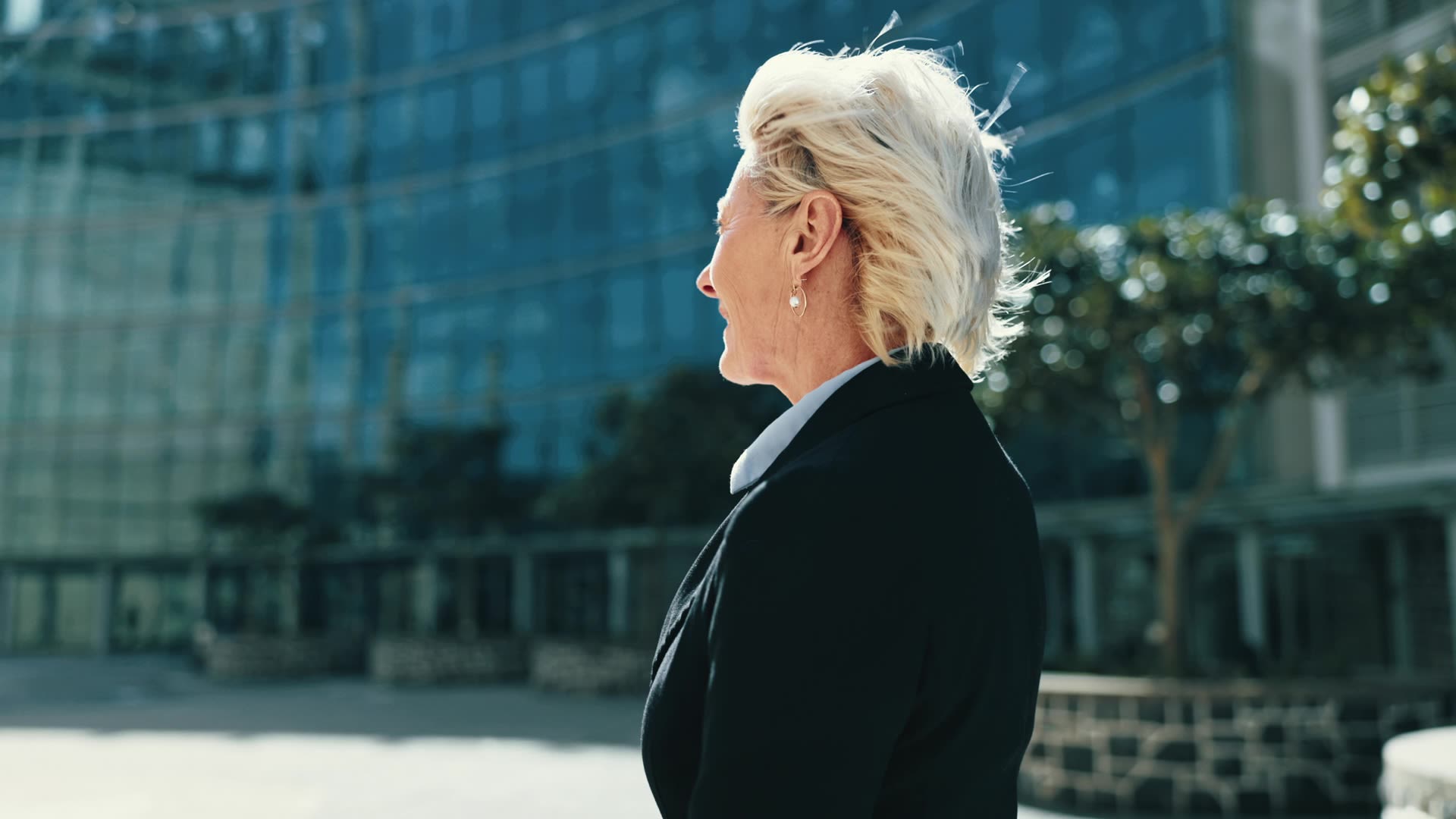2025 TRENDS
Tariffs, service leadership and hopes for a greener future
From AI-driven innovation to brain health, eco-ambition and the rise of older women as powerful leaders, here are the currents driving change and transformation
Words: Ali Catterall, Lysanne Currie, Ryan Herman, Christian Koch, Julia Raeside

2025
TRENDS
Tariffs, service leadership and hopes for a greener future
From AI-driven innovation to brain health, eco-ambition and the rise of older women as powerful leaders, here are the currents driving change and transformation

AI and us
AI is clearly going to play a major role in our future. According to Forbes, the global AI market is projected to grow annually by 36.6% until 2030, and by next year many businesses (64%) expect it to routinely work alongside us to boost productivity and creativity, assisting with research, writing and problem-solving. In areas such as customer service and translation, AI will really come into its own, while quantum AI, although still in its early stages, has the potential to transform fields such as medicine by vastly accelerating the amount of data that can be processed.
Downsides? There are commonplace predictions that jobs destroyed by technology will be replaced by new openings, but there's a frustrating vagueness about where these new roles will appear, other than in AI-related tasks such as prompt engineering. It seems unlikely, say, that a coder whose once-prized skills are now surplus to requirement will happily retrain as a low-paid carer. According to estimates, almost half of current employees will need further training to adapt to new technologies. Will companies with one eye on a lower headcount foot the upskilling bill? In short, AI is a positive tool – but only if we take the necessary steps to ensure it doesn’t just leave people behind.
AI and us
AI is clearly going to play a major role in our future. According to Forbes, the global AI market is projected to grow annually by 36.6% until 2030, and by next year many businesses (64%) expect it to routinely work alongside us to boost productivity and creativity, assisting with research, writing and problem-solving. In areas such as customer service and translation, AI will really come into its own, while quantum AI, although still in its early stages, has the potential to transform fields such as medicine by vastly accelerating the amount of data that can be processed.
Downsides? There are commonplace predictions that jobs destroyed by technology will be replaced by new openings, but there's a frustrating vagueness about where these new roles will appear, other than in AI-related tasks such as prompt engineering. It seems unlikely, say, that a coder whose once-prized skills are now surplus to requirement will happily retrain as a low-paid carer. According to estimates, almost half of current employees will need further training to adapt to new technologies. Will companies with one eye on a lower headcount foot the upskilling bill? In short, AI is a positive tool – but only if we take the necessary steps to ensure it doesn’t just leave people behind.
Systems leadership
Systems leadership focuses on “connecting the dots” and seeing the bigger picture in areas such as energy transition, nature-based solutions and emerging technologies to address global problems. It helps us understand how the different parts of a system interact, encouraging a culture of working together to create lasting change and ensure the next generation of decision-makers can tackle tomorrow’s global challenges.
And there’s evidence that the concept is taking hold: according to Korn Ferry’s Global Workforce 2024 Survey, global business leaders are increasingly investing in leadership training programmes that emphasise concepts such as agility, inclusivity and tech-savviness. Says Villars Institute, an NGO dedicated to creating a sustainable, eco-friendly world, “We aim to create awareness among young people about systems leadership, and through that inspire a sense of agency – an approach that rejects cynicism, but also is not naive. We can face up to all that is wrong in the world with hope that change is possible.”

To EDI for
In this climate of cost-cutting and uncertainty, diversity and inclusion are undoubtedly suffering. Where, in the wake of #MeToo and Black Lives Matter, businesses once felt an imperative to be accountable, that urgency has diminished. US beer company Molson Coors announced it would no longer have specific representation goals for its employees and suppliers (it also stopped sponsoring Pride celebrations), while Starbucks has faced a backlash for scaling back its EDI initiatives – and those companies are far from alone.
And yet… a McKinsey report found that companies in the top quartile for gender diversity were 30% more likely to outperform their less diverse peers in terms of profitability. Similarly, those in the top quartile for ethnic and cultural diversity were 27% more likely to have a financial advantage over their less inclusive competitors. Even just for sound economic reasons, it’s time to get diversity and inclusion trending again: everyone in a work environment needs to feel seen, heard and psychologically safe.

The new
head-onism
Alongside the long-term trend for CEOs blowing big bucks on luxury, similarly extravagant new high: brain health. Contributing to the coffers of the wellness industry – expected to reach $8.4trn (£6.52trn) by 2027 – business leaders are now seeking to optimise their health and longevity, turning to treatments such as ice baths, meditation and therapies to boost their brain performance.
Whether via spa retreats offering electro-therapy to stimulate the grey matter or natural alternatives such as the boom in mushroom-based supplements, a big-thinking, boundary-pushing brain is the newest status symbol. Clinics such as SHA Wellness in Spain are offering cognitive health programmes, including treatments such as transcranial current stimulation, to enhance focus, coordination and memory. There’s also growing interest in fasting and spiritual healing, with retreats such as Euphoria offering both medical treatment and emotional support. A longer, healthier life is the new status symbol – a long way from Salt Bae’s 24-carat gold steaks.

Bridging the generation gap
The World Economic Forum’s Global Risks Report 2024 highlighted some critical issues: growing global risks, climate change, economic instability and geopolitical tensions, further complicated by weak governance. But it also reminds us that current leadership structures often exclude younger generations, who have the most to lose in the fight against global warming, but whose voices have remained largely sidelined in the decision-making.
This needs to change. On a positive note, according to the UN, youth-led climate initiatives have grown by 30% over the past five years, demonstrating the significant driving role younger generations can play. Meanwhile, according to a study by the Grantham Research Institute, companies with intergenerational climate justice programmes are 40% more likely to achieve their sustainability goals than those without, while intergenerational teams are 50% more effective at developing innovative solutions to challenges. As World Economic Forum MD, Saadia Zahidi, says, “The future is not fixed.”
Trump effect
Whatever your view of the US election result, most of the consequences of chapter two of the Donald Trump presidency remain a matter of conjecture for now. What we do know is that his decisions are likely to have a huge impact in the UK and elsewhere, certainly when it comes to trade.
Trump is a fan of tariffs (which he has described as the “most beautiful word”). During his first term, to give just one example, he slapped a 25% import tax on single malt scotch whisky, which ran from October 2019 to March 2021. It was the result of a long-running dispute in the aerospace sector, with Boeing complaining that the EU was subsidising its rival, Airbus. A five-year truce was called in 2021 – and that expires in June 2026. The scotch whisky industry estimates those duties cost it in the region of £600m, more than £1m a day, and understandably it’s keen to avoid a repeat.
“We know that a lot of people are thinking about this and there’s some crisis management and planning going on in companies that are likely to be targeted,” said Duncan Edwards, Chief Executive of British-American Business trade association, shortly before the election. You can be sure that planning will have gone up a few gears since then.

Silent sacking
A recent article in Fast Company featured the headline “Silent sacking is the new quiet quitting”. While the practice is nothing new, the reason behind it is. It is hardly a secret that big companies are investing heavily in AI and need to find ways to fund that investment. George Kailas, CEO of Prospero.Ai, explains that silent firing “is where companies make jobs more difficult in the hopes that employees quit, so their jobs can be automated”.
One example put forward to support that argument is Amazon, which is pushing for workers to spend five days in the office even though staff are overwhelmingly against it and a reported 73% are considering quitting. Challenger bank Starling recently insisted its workers spend at least 10 days a month in the office, even though those offices have nothing like the desk space to accommodate them all. Even more extreme is Elon Musk’s insistence on Twitter/X employees agreeing to go “extremely hardcore” or face dismissal.
The increasing ability of an employer to monitor their employees’ activity also potentially makes it easier to get rid of somebody to cut the numbers – as Meta staff fired for using free lunch vouchers to buy household goods instead may have learned to their cost. Whether the ethical issues at play here will force a rethink is one for the future; for now, there’s little to stop big business shedding staff by fair means or foul.

Eco ambition
Today’s youth are set to inherit the worst consequences of global warming and the political decisions of recent leadership – but it’s not all doom and gloom.
Directly challenging this narrative of “eco-anxiety” (a 2021 report found three-quarters of people aged 16–25 in 10 countries think the future is scary due to climate change), the Villars Institute’s annual Global Issues Survey has also revealed some more optimistic trends. “Eco-ambition” is the key phrase among young people prioritising biodiversity, climate and energy reforms in their careers – according to a 2022 survey by the Jack Petchey Foundation, one in three young people are already interested in pursuing a career in the environmental and sustainability sectors. Meanwhile, a survey from UWE Bristol has found that 72% of young people are willing to change their lifestyles for climate action, compared with 62% of adults, while 82% support shifting away from fossil fuels.

Service leadership
Service leadership is a management style that puts other people’s needs first. Built on qualities such as humility, empathy and cooperation, its core idea is that leaders should act as “servants” to their team, supporting and empowering, rather than directing from a position of personal power.
According to Gallup’s State of the Global Workplace report, organisations with strong service leadership report higher employee engagement levels, with 65% of employees feeling more motivated and committed to their work. By enabling those they lead, service leaders are encouraged to leave their egos at the door to create a more collaborative and supportive environment in which all individuals, especially those from marginalised communities, can grow and flourish.

Cool crones
Where once they were expected to fade into the background and await their status as grandmother, older women are now finding themselves liberated and moving into their power, emerging as a symbol of knowledge, experience and leadership. Yes, the age of the “Cool Crone” is upon us, and we’re just starting to understand the impact of this all-but-invisible social group.
The most recent Forbes 100 Most Powerful Women list was heavily skewed towards the Cool Crone: 80% were over the age of 50; 60-somethings Ursula von der Leyen, Christine Lagarde and Kamala Harris topped the list; Taylor Swift was the sole under-40 in the top 40. Meanwhile, as a recent piece on the “Power-Ager” in the Daily Mail pointed out, “76% of 50+ women are confident in their own skin, spending more than ever on fitness, beauty, health supplements and travel.”

ADVERTISEMENT




